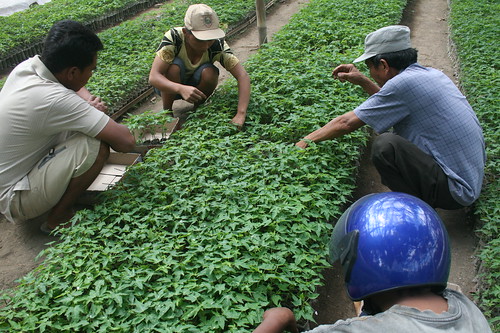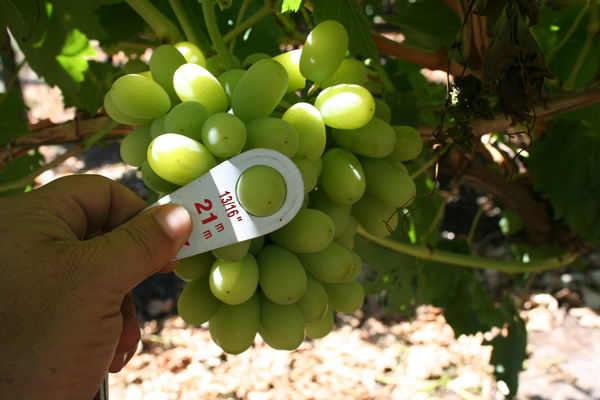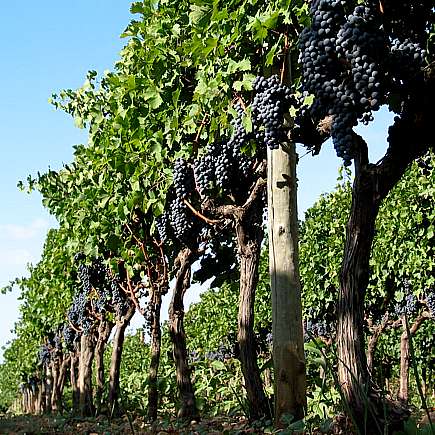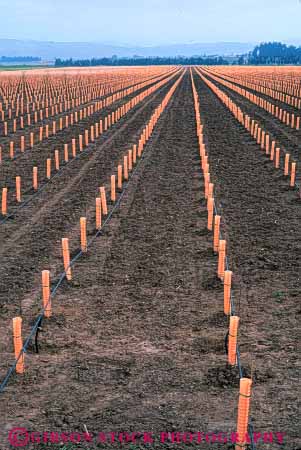
Pest and Disease Management
A. Pest
- Head lice Phylloxera (Phylloxera vitifoliae), roots and leaves, sucking fluids. Symptoms: didaun formed small boils and swollen roots, such as warts, consequently stunted growth, withered and the fruit a bit. Control: to cut and burn infected plants, spray or PESTONA BVR
- Red Mite (Tetranychus sp.), Yellow spots on leaves and turn black, resulting in stunted and the fruit is reduced. Control: Spray or PESTONA BVR
- Caterpillars bag (Mahasena corbetti), takes the top surface of the leaf, place small holes in leaves. Control: Prune and cut the weight of plants attacked and burned and spray with PESTONA + NASA POC
- Leaf Beetle (Apogonia Destructor), consuming or damaging the leaves, then make small holes on the leaf surface. Control: pairs of light trap and destroy, spray PESTONA
- Grayak caterpillar (Spodoptera sp.), Attacking the leaves until broken and hollow. Control: Spray with Natural VITURA
- Moth grapes (Paralobesia viteana or Grape Berry Moth), the larvae eat the flowers and fruit are still the old faucet and so the fruit is not normal. Control; Dispose of fallen fruit and fuel, spray PESTONA later than 14 days before harvest
Other pests such as termites, rats, birds, squirrels and bats. Control: field sanitation, pack fruit, insects and a trap drive
B. Disease
- Flour Fake (Downy Mildew), mushrooms Plasmopora viticola, attacking the young stems, vines, fruit fruit stalk and grain. Control; reduce humidity garden (trimmed), cut and destroy infected plants, attach the shade, Natural GLIO + sugar.
- Truffles Flour (Powder Mildew), fungus Uncinula Necator, attacking all stages of growth. Leaves rolled up and covered the abnormal form of flour until slightly darker gray, brown stem pain. Control: Spray Natural GLIO + sugar.
- Leaf spots (Alternaria and Cercospora viticola Vitis), arising brown spots and black spots so that the shoots and leaves dry and fall. Control: Sanitation gardens, reducing the humidity garden, cut and destroy infected leaves, spray with Natural GLIO
- Leaf Rust, mold Physopella ampelopsidis, there is an orange powder on the underside of the leaves and on the upper side of leaves are yellowish green patches and the entire surface covered with layers of flour so the leaves dry and fall. Control: Prune sick leaves and spray with Natural GLIO + granulated sugar
- Black Rot (Black Rot), fungus Guignardia bidwelli, small patches of white on the color of the fruit is almost ripe with brown edges, then settles rotten fruit and black mengeriput like "mummi". Control: Prune the pain, reduce the moisture, wrap the fruit, sugar + Natural GLIO
- Scabies (controlling scab), Mushroom Elsinoe ampelina, attacking all parts of the plant. Gray spots with reddish-brown edge, then hardens and scabby fruit flesh. Control: Prune diseased part, field sanitation, Natural Spray GLIO + granulated sugar
- Grey Mould Rot (Gray Mould Rot), Botrytis cinerea fungus, growing on the grapes before cooking. Fruit dark brown, shriveled and rotten. Control: harvest and post harvest handling is good, Natural Spray GLIO + sugar.
Note: If the control of pests and diseases with natural pesticides can be used has not been able to cope with chemical pesticides is recommended. Spraying of chemical pesticides in order to more evenly and not easily lost by rain water add 810 AERO Adhesives Straighten dose + 5 ml (1 / 2 cap) everytank





























